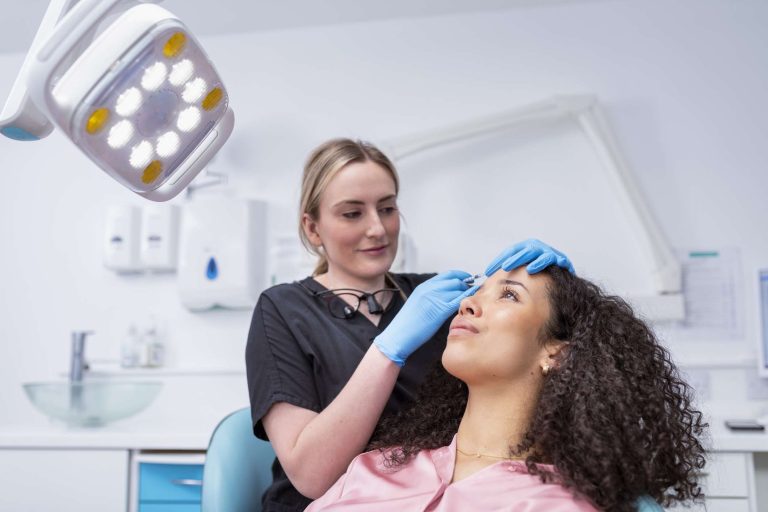US authorities have warned that counterfeit Botox products have sickened people across the country after receiving the injections.
A total of 22 people reported symptoms after botulinum toxin injections, according to the Centers for Disease Control and Prevention. The incidents occurred in California, Colorado, Florida, Illinois, Kentucky, Nebraska, New Jersey, New York, Tennessee, Texas and Washington.
All but two of the people who had reactions received the injections for cosmetic reasons. All 22 were taken by unlicensed or untrained people in non-health care settings such as homes and spas.
Eleven people went to the hospital. A total of six were treated with botulism antitoxin because of concern that the botulism toxin, which is the same toxin that causes the rare but potentially fatal food poisoning botulism, could have spread beyond the injection site.
The Centers for Disease Control and Prevention notes that people have experienced symptoms similar to botulism: blurred vision, general weakness, difficulty swallowing, difficulty breathing, droopy eyelids, dry mouth, slurred speech and fatigue.
“These complications highlight the urgent need for patients to carefully understand who they choose to have botox procedures.” Seemal R. Desai, MDpresident of the American Academy of Dermatology Association, said in a statement.
The FDA, as well as several state and local health agencies, investigate the origin of the products.
According to the FDA, the counterfeit product has some similarities to the FDA-approved brand of Botox made by AbbVie, but the agency said there is no evidence that the two are linked.
Monty Rakusen/Getty Images
What exactly is Botox—and how can fake versions cause disease?
Botox is a drug made from botulism toxin produced by the bacterium Clostridium botulinum. The toxin blocks muscle movement and is used to temporarily smooth facial wrinkles. It can also be used for medicinal purposes, such as to treat excessive sweating or migraine.
In addition to approving the Botox brand, the FDA has approved other brands of botulinum toxin injections, including Dysport, Xeomin, and Jeuveau (although people tend to refer to them all as Botox). When used correctly, toxin injections are generally safe.
Michael C. Cameron, MDsaid an assistant clinical professor of dermatology at Mount Sinai Health System Health that FDA-approved products are precisely formulated so that the botulinum toxin is diluted enough to prevent botulism.
Meanwhile, black market versions can make people sick because manufacturers fail to properly dilute the neurotoxin.
“”[Counterfeit manufacturers] the processes do not exist to mass produce the correct dilution of the toxin,” Cameron said. “They’re trying to develop a knockoff product and they don’t have the expertise to do it.”
Cameron said it was unlikely that improper handling caused the illnesses. This is more likely to result in a product simply not working, he said, rather than botulism-like symptoms.
If someone has contact with botulism, they may initially feel weakness in the muscles that control parts of the face before it spreads to the neck, arms, trunk and legs. Weakness can cause difficulty breathing.
Experts said choosing the right provider is critical when it comes to Botox injections.
They recommend going to a board-certified dermatologist, plastic surgeon, or ophthalmic surgeon for cosmetic injections. If you see a non-physician clinician, make sure they are properly trained and working under the supervision of an on-site board-certified dermatologist, Desai said in the statement.
If you need Botox for medical purposes, Cameron said other doctors, such as neurologists, can administer it in their offices.
According to Desai, doctors must adhere to strict standards to protect patient safety. These relate to the types of materials used, where they come from and how they are handled.
If you’re not sure if your provider has the necessary experience, the CDC recommends asking if they’re licensed and trained to give the injection.
It is also important to learn more about the product itself. Ask if it is FDA approved and obtained from a reliable source. And, as an added precaution, it doesn’t hurt to ask to see the vial or package, Cameron added.

